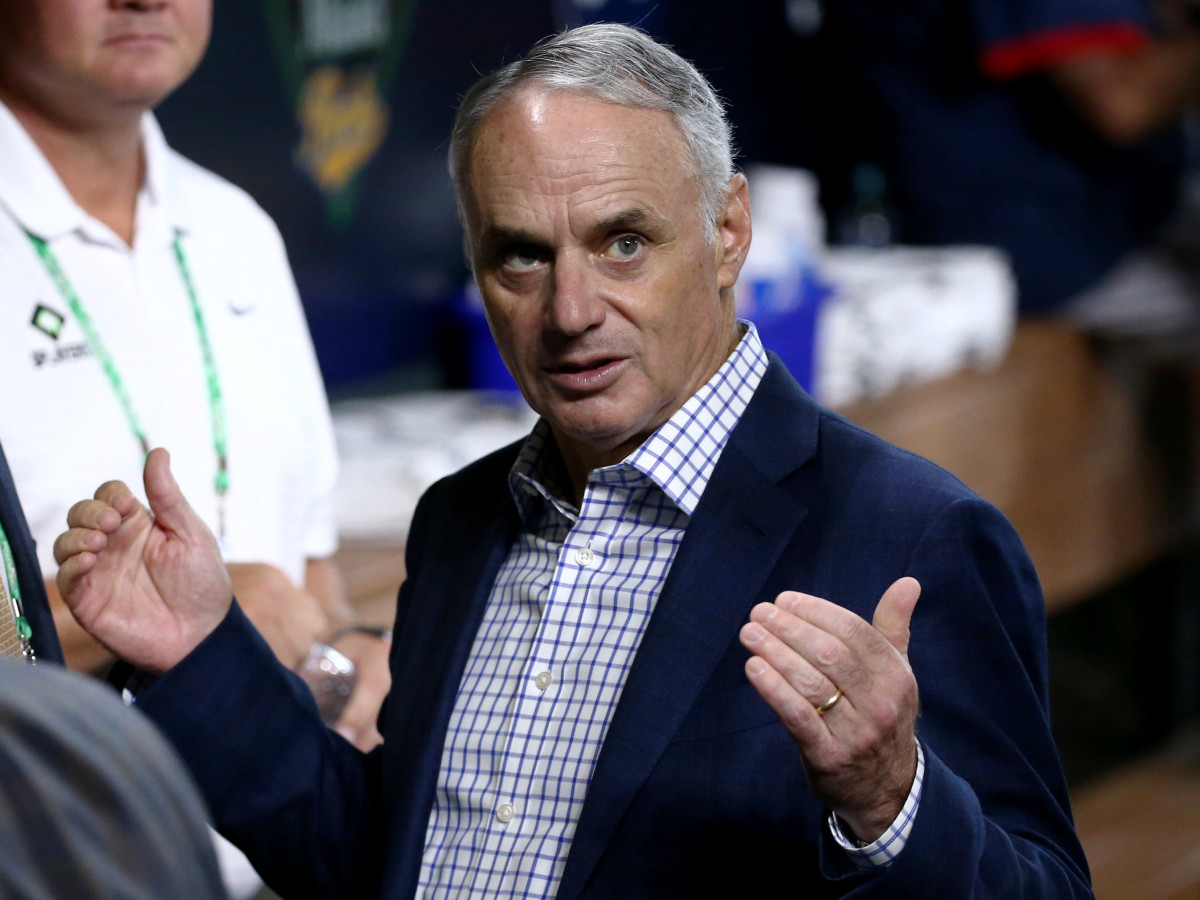MLB and the MLBPA Still Have a Long Way to Go
Major League Baseball made proposals Thursday to the Major League Baseball Players Association that addressed economic issues and a revised draft lottery, according to sources familiar with the talks.
The proposals represented the first substantive talks since MLB began the lockout Dec. 2. However, it was not immediately known whether the proposals paved any ground in forming a pathway toward an agreement. Until now, progress and common ground have been so rare that the scheduled start of spring training could be jeopardized. The first workouts for pitchers and catchers are Feb. 16. The first games are scheduled for Feb. 26.

The gap between the two sides can be explained as a difference in how much renovating to do to the expired Collective Bargaining Agreement. The players have asked for changes to three pillars of past agreements: free agency eligibility, arbitration eligibility and revenue sharing, which is the money sent from larger market clubs to smaller market clubs.
The owners have told the players that changes to free agency eligibility, for instance, is a non-starter—the equivalent to how players view a salary cap. Free agent eligibility has remained at six years of service time since the late union chief Marvin Miller helped establish it in 1976.
Players want to see younger players gain greater earning power, which is why they have sought to reduce arbitration service time eligibility. In response, owners on Thursday proposed a formula to drive more money to all two-plus service time players, not just those who qualify as Super Two arbitration eligible.
In response to players’ concern about service time manipulation, owners proposed a system to incentivize clubs to promote their best players.
The owners’ NBA-style draft lottery proposal was made to address the union’s concern that teams have been fielding non-competitive teams in part to gain higher draft picks. The latest proposal responded to the players’ feedback to their initial proposal.
The owners previously made proposals to eliminate draft pick compensation associated with free agency qualifying offers, to add the designated hitter to the National League, to raise the minimum salary 23% to $700,000, and to increase the Competitive Balance Tax threshold by $4 million to $214 million. The players first proposed the threshold be set at $248 million and then countered at $245 million.
Distrust and timing are important elements as negotiations have yet to gain traction. The players are wary that owners have leveraged the past two or three CBAs in conjunction with efficiency-driven analytics to drive down competition and player costs. They view “tanking,” or fielding non-competitive teams to rebuild farm systems, as a core economic and philosophical issue.
Pressure to work toward a deal increases only as spring training and a full 162-game season become in jeopardy. For instance, the last lockout, in 1990, ended on March 18. Players were in camp two days later. To save the full season, the two sides agreed to gerrymander the calendar. They staged a condensed, three-week spring training, pushed Opening Day a week later, and added three days of games to the back end of the schedule.
Opening Day this year is scheduled for March 31, two days earlier than in 1990. Because of expanded playoffs, there is little to no wiggle room to extend the regular season. For those reasons, the last date for an agreement that would save the full season is earlier than it was in 1990 by about a week or so, to around March 9.
But free agency presents another major difference between 1990 and this lockout. The 1990 lockout did not begin until Feb. 15, just as camps were about to open. Most free agent business had concluded by then. When this lockout began on Dec. 2, only 61 free agents had signed. In a typical year, about 120 major league free agents are signed, which means about half of free agent business still needs to be resolved after an agreement is reached.
More MLB Coverage:
• MLB, MLBPA Finally Met. Not Much Happened
• Jon Lester’s Epic Baseball Story Comes to an End
• Hall of Fame Tracker Is Improving the Cooperstown Conversation
• Solidarity and Betrayal: Inside Baseball’s First Major Labor War
